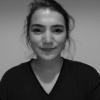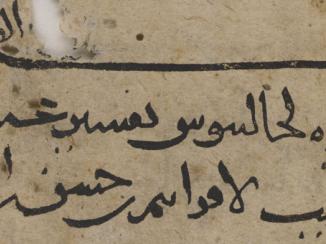Overview
The knowledge demanded of medical students in the medieval period was more complex and comprehensive than one may imagine. There already existed a complex system of disease classification including causation, presentation and treatment, with which every medical student was expected to be intimately familiar. Fortunately, over the course of centuries, sympathetic scholars had produced manuals containing information necessary for students to pass examinations and embark upon a successful career.
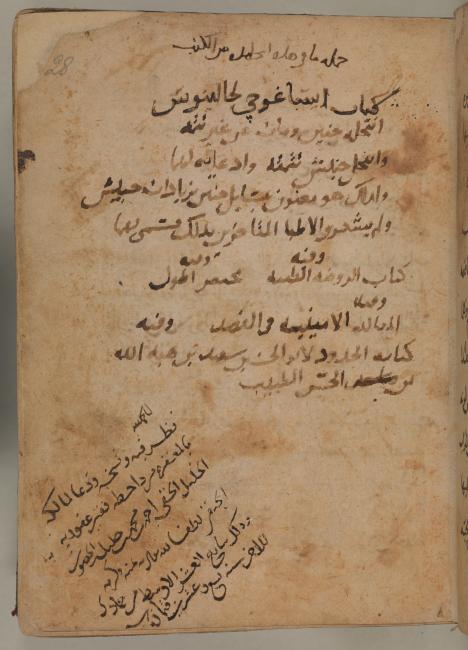
The great Syriac physician and prolific, multilingual translator Ḥunayn Ibn Isḥāq (AD 809–873) undertook the writing of two such manuals, motivated perhaps by the memory of his own expulsion from medical school for asking too many questions. Thereafter he travelled, probably to Alexandria, where he may have found answers to his questions in the works of Aristotle and Galen.
The 'Questions and Answers' Format
Ḥunayn subsequently wrote two manuals in the format of 'questions and answers'. The first, Questions on Medicine (Masā’il fī al-ṭibb), served as a general introduction to the subject and the second, Questions on the Eye (Masā’il fī al-‘ayn), dealt specifically with the anatomy and diseases of the eye. This format was rooted in Aristotelian logic and developed through a long series of Christian and Jewish religious disputations. A rich literature of debates between the various Christian theological schools and converts to Islam had developed, and this format was later taken up by early Muslim scholars. Islamic discussions initially dealt with interpretation of Quranic verses, but were soon applied to legal and scientific issues. The objective was both dialectic and didactic: the discussions were aimed at generally advancing knowledge and transmitting it to students. The 'questions and answers' format therefore fulfilled a practical function and provided an ideal template for teaching manuals in legal and medical disciplines.
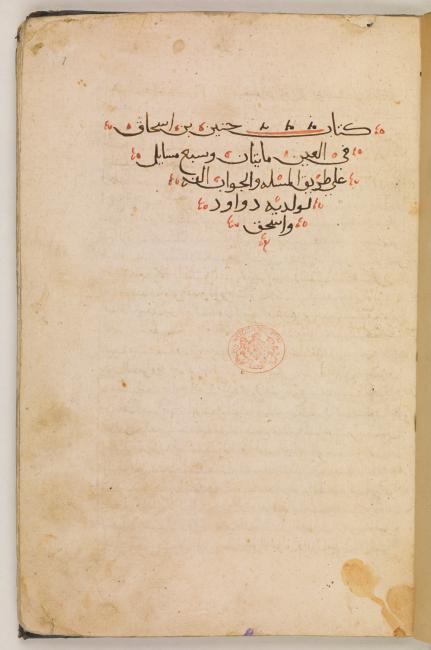
Ḥunayn’s Method
Ḥunayn’s manuals represent a great advance toward classification, based on the classical theory of the four bodily humours. Some of his answers are remarkable for their descriptive precision and clarity of presentation. For example, in the Questions on Medicine, Ḥunayn posed the questions ‘how many types of fever are there?…What are they?’ and answered by distinguishing different origins, causes and patterns of febrile episodes (the cycles of bouts and crises in a fever). He also highlighted the importance of determining whether the cause of infection was exogenous (externally caused) or endogenous (internally caused); ‘for there are [fevers] that appear with a cause that occurs in some part of the body, and there are those that appear without a cause in any part of the body’.
Some of the questions and answers may appear surprising today. For example, in the Questions on the Eye Ḥunayn asks ‘why does the eye have two eyelids, instead of one or three?’ and answers that ‘the reason is if the eye had only one eyelid this eyelid could only originate from above or below; if its origin were from above, mineral collyrium would not stay in the eye...and in addition the eye would be uglier. If the lid were to originate from below, it would not cover the eye entirely...and the eye would furthermore have an ugly and disgusting appearance when open’. Since for Ḥunayn and his contemporaries the perfection of God's creation could not be doubted, his answer effectively excluded the possibility of humans having only one eyelid; this constituted a reductio ad absurdum, a classical argumentative device used in 'questions and answers' texts.
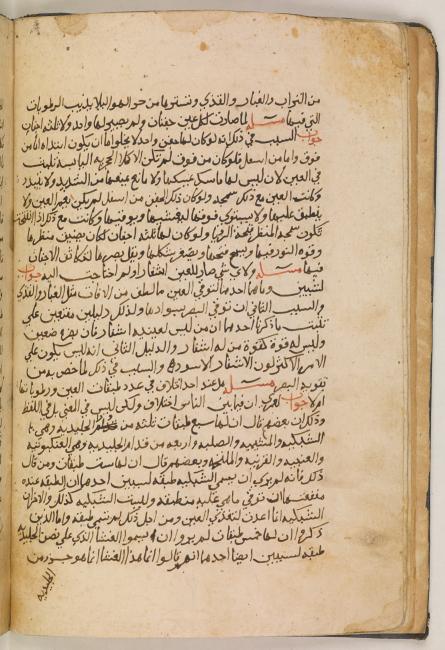
The Fate and Influence of Ḥunayn's Medical Manuals: East and West
The two manuals were extremely popular among medical students and soon constituted an indispensable revision tool. Senior physicians recognised their quality and they became standard examination materials for medical students across the medieval Arab world. In some manuscript copies of these texts, one can still read the certificates (ijāzahs) that were issued to their owners upon successfully passing their exams. These certificates allowed their bearers to practice the medical profession and may be considered precursors of our modern diplomas.
The success of Ḥunayn's manuals led to material from Questions on Medicine being translated into Latin probably as early as the eleventh century. In a straight narrative format, this material found its way into the Articella, a collection of six books considered to be the first medical curriculum in Medieval Europe. Ḥunayn became ‘Johannitius’ in Latin, and the text was referred to as the Isagoge ('Introduction'), as it is in some manuscripts of the Arabic text. Adopted by the Scuola Salernitana in Southern Italy, possibly the first medical school in Europe, the text was later introduced into England, probably by Anselm of Canterbury (died 1109). The manual was studied in Europe’s leading medical schools and universities in Paris, Bologna, Oxford, Montpellier, and Padua, and was continuously reprinted until the sixteenth century. As the Renaissance witnessed new developments in anatomy and physiology, Hunayn's manuals were gradually abandoned in European Universities. They had, nevertheless, succeeded in assisting many generations of medical students.
